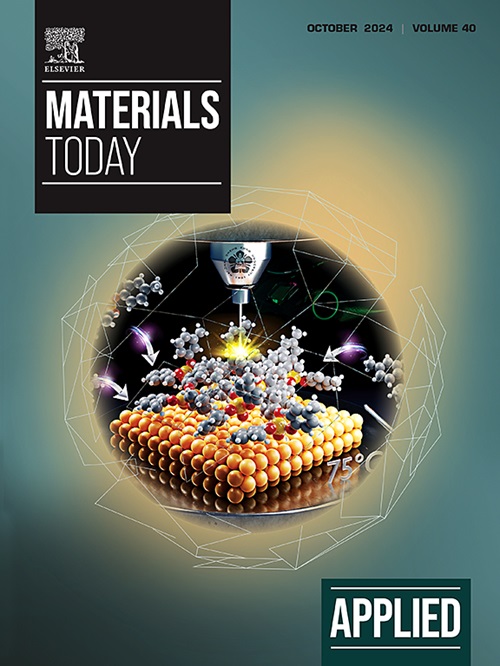旋压强化 W-Cr 融合装甲
IF 6.9
2区 材料科学
Q1 MATERIALS SCIENCE, MULTIDISCIPLINARY
引用次数: 0
摘要
在这里,我们在钨铬合金的新型候选等离子体表面材料(PFM)中引入了一种不连续的旋光强化策略。W-34wt%Cr 合金在 1250 °C 的热老化过程中,从晶界处异质形成了 200-600 nm 的纳米级薄片,这些薄片逐渐完全长入基体,100 h 后粗化至 1-2 µm。此外,铬合金促进了致密氧化鳞的形成,与钨相比,它在 1000 °C 时的抗氧化性提高了 2 个数量级,这是在失去真空的事故条件下对 PFMs 的一个重要考虑因素。W-Cr 双相合金概念兼具高强度和抗氧化性,是钨的一种新的可扩展替代品,具有进一步合金化和工艺优化的广阔空间。本文章由计算机程序翻译,如有差异,请以英文原文为准。
Spinodally reinforced W-Cr fusion armour
Here, we introduce a discontinuous spinodal reinforcement strategy in the novel candidate plasma facing material (PFM) of tungsten-chromium alloys. Thermal ageing of a W-34wt%Cr alloy at 1250 °C causes nano-scale lamellae 200–600 nm to form heterogeneously from grain boundaries, which progressively grow into the matrix fully, then coarsen to 1–2 µm after 100 h. The dual-phase microstructure confers exceptional high temperature compressive strength, maintaining 900 MPa at 1000 °C - double that of polycrystalline tungsten. Further, the chromium alloying promotes a dense oxide scale that confers a 2 orders of magnitude improvement in resistance against oxidation at 1000 °C compared to W, which is an important consideration for PFMs under loss of vacuum accident conditions. The dual-phase W-Cr alloy concept's combination of high strength and oxidation resistance represents a new scalable alternative to tungsten, with wide scope for further alloying and process optimisation.
求助全文
通过发布文献求助,成功后即可免费获取论文全文。
去求助
来源期刊

Applied Materials Today
Materials Science-General Materials Science
CiteScore
14.90
自引率
3.60%
发文量
393
审稿时长
26 days
期刊介绍:
Journal Name: Applied Materials Today
Focus:
Multi-disciplinary, rapid-publication journal
Focused on cutting-edge applications of novel materials
Overview:
New materials discoveries have led to exciting fundamental breakthroughs.
Materials research is now moving towards the translation of these scientific properties and principles.
 求助内容:
求助内容: 应助结果提醒方式:
应助结果提醒方式:


